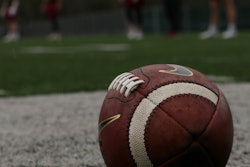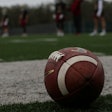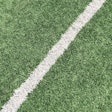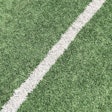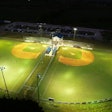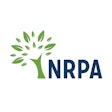Copyright 2017 Dayton Newspapers, Inc.
Dayton Daily News (Ohio)
The playground: a universal source of fun for children. It's also a place to burn calories, make new friends and develop skills like how to judge risks and make decisions. A good playground challenges and engages children but is also designed to keep them safe. One of the best ways to lower the chances of serious injuries is to make sure there is safe surfacing under and around the equipment.
Safe surfacing on playgrounds falls into two categories: loose materials such as wood chips, sand or pea gravel or permanent rubber-like materials. If a child falls, these softer materials absorb energy, making injury less likely. Hard surfaces such as grass, dirt, rocks, asphalt or concrete do not absorb as much energy, meaning the child is more likely to be injured in a fall.
Dayton Children's Hospital, a member of Prevent Child Injury, is participating in activities this week to promote the need for safe surfaces on playgrounds.
From AB: Why are so many communities still struggling to create safe playgrounds?
About 75 percent of injuries on the playground are due to falls. If your playground or home swing set is over grass, dirt, asphalt, or concrete, it's time to update. "Good surfacing under and around playground equipment means fewer serious injuries for all children who come to play," says Abbey Rymarczyk, Safe Kids Greater Dayton coordinator. "Even a simple swing set in the backyard should have protective surfacing to prevent injuries when kids fall."
Whether you're at home or out at a public playground, remember to check the surfacing first.
From AB: Playground Designers Face Hard Choices When Specifying Surfacing
Is it the right type? Surfacing should be either loose materials such as wood chips, sand, or pea gravel OR permanent rubber-like materials. Permanent rubber-like surfacing and engineered wood fibers are the only surfaces that meet the requirements of the Americans with Disabilities Act.
Is there enough coverage? Surfacing should extend 6 feet out from all edges of playground equipment. Swings and slides need more coverage depending on how tall they are, so check with the Consumer Product Safety Commission to see exactly how much coverage your playground needs.
Is it in good condition? If surfacing is loose materials, check heavily-used areas like under swings and at the end of slides to make sure 12 inches of material is in place. Check permanent rubber-like surfacing for worn spots or holes.
If not, make another choice. If you didn't say yes to these three questions, let the organization that oversees the playground know that the playground needs attention and find a new place to play until the playground meets guidelines.
This look at a children's health or safety issue comes from Dayton Children's Hospital.
Email:[email protected]
Read More of Today's AB Headlines
Subscribe to Our Daily E-Newsletter
Terms and Conditions Privacy Policy

















